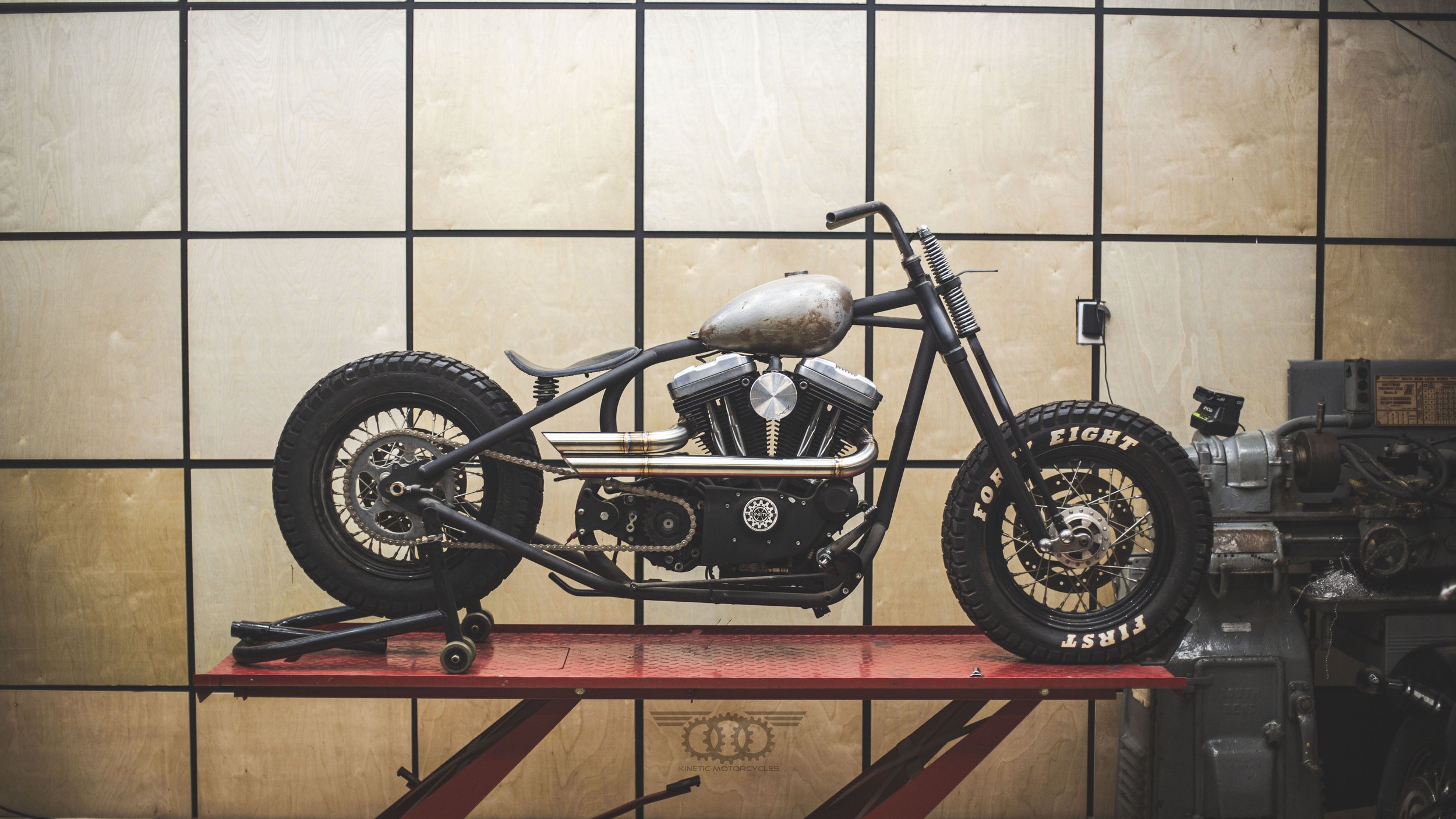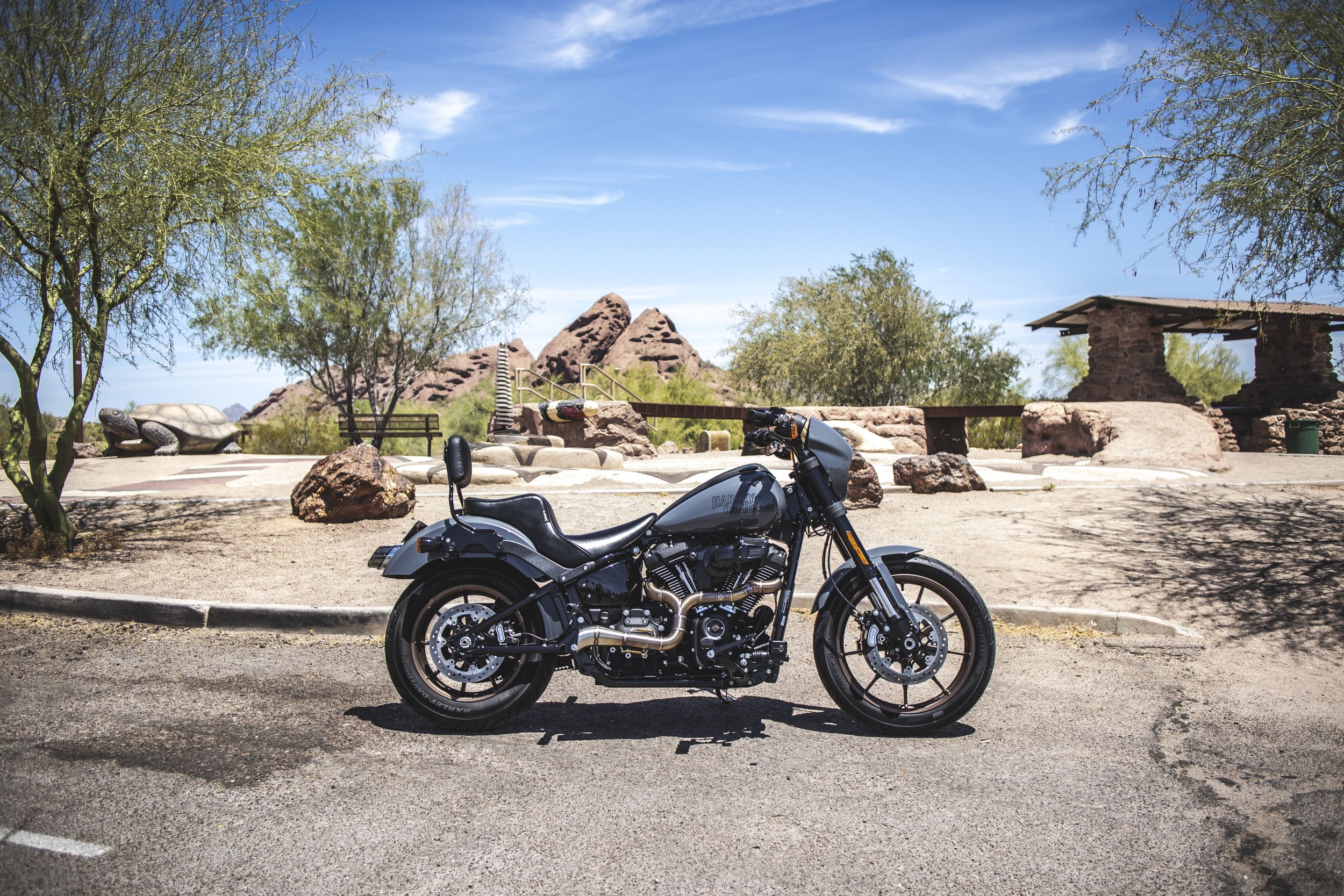Essential Skills to Build a Custom Motorcycle: From Rusty Frame to Dream Ride
So, you’ve been bitten by the custom motorcycle bug, huh? Whether it’s a sleek café racer or a head-turning chopper, building a custom motorcycle isn’t just a project—it’s a lifestyle.
For riders like us, it’s not just about getting from A to B; it’s about making a statement, a rolling piece of art that’s uniquely you. But let’s not sugarcoat it—this ain’t a job for the faint-hearted. Building a custom motorcycle takes skills, patience, and a whole lot of grit.
Ready to dive into the world of motorcycle customization? Let’s gear up.
What Does It Take to Build a Custom Motorcycle?
Building a custom motorcycle is an adventure, one that fuses mechanics, creativity, and passion. But what does "custom" really mean? It’s about taking a stock motorcycle and tweaking it—or completely overhauling it—until it screams you. From chopping frames to rewiring systems, the possibilities are endless.
But here’s the kicker: it’s not just about slapping on shiny parts. It’s about understanding the machine, balancing form and function, and making sure your dream motorcycle doesn’t just look cool but rides like a dream too.
Understanding the Basics of a Custom Motorcycle Build
Before you dive into the nitty-gritty of motorcycle customization skills, it’s crucial to grasp the fundamentals of a custom motorcycle build. From choosing the right base bike to planning your modifications, understanding the basics sets the foundation for a successful project. Think of it as mapping out your journey before hitting the road—without it, you’re just guessing at every turn.
What exactly is a custom motorcycle?
You’ve probably heard terms like bobber, chopper, or café racer thrown around. Each style has its vibe:
Café Racers: Built for speed and agility, inspired by the ‘60s British motorcycle culture. Think stripped-down, minimalist motorcycles with a racing posture.
Choppers: The rebels of the motorcycle world. Extended forks, high handlebars, and stripped frames scream individuality.
Scramblers: Off-road warriors with knobby tires and rugged aesthetics.
Bobbers: Minimalist builds that ditch unnecessary parts for a clean, raw look.
The Build Process: From Dream to Reality
Each custom motorcycle build follows a roadmap that you can use to create your unique dream machine.
Inspiration and Research: Pin down your style. Scroll through Instagram or Pinterest, attend motorcycle shows, or dive into forums.
Planning and Budgeting: Sketch out your ideas and crunch the numbers. Trust me, this part saves a lot of heartbreak later.
Stripping and Modding: Tear down the motorcycle and start customizing.
Assembling and Testing: Put it all together and take it for a spin. Adjust, tweak, repeat.
This straightforward 4-step process keeps you organized and saves you a significant amount of time. Most importantly, it enables you to achieve your goals easily and effectively.
Core Skills Needed for Motorcycle Customization
Building a custom motorcycle isn’t just about bolting on parts; it’s a craft that blends creativity with hands-on expertise. To bring your dream ride to life, you’ll need a solid foundation of skills—from mechanical know-how to fabrication finesse.
Here are some essential skills you should develop as a custom motorcycle builder:
1. Mechanical Know-How: The Heart of the Build
If you’re diving into a custom motorcycle build, understanding the mechanical basics isn’t optional—it’s a rite of passage. This isn’t just about making your motorcycle run; it’s about making it run right. Here’s a deeper dive into the essentials:
Engine Tuning
Your engine is the soul of your ride, and mastering its mechanics is non-negotiable. Whether you’re working with a thumper (single-cylinder engine) or a parallel twin, you need to understand:
Rebuilding: Know how to disassemble, clean, and reassemble the engine. Check components like pistons, camshafts, and valves for wear.
Tuning: This includes setting your carburetor for a proper fuel-air mixture or learning how to fine-tune fuel injectors. A well-tuned engine doesn’t just run smoother—it roars with character.
💡Pro Tip: Invest in a motorcycle repair manual specific to your motorcycle model. Haynes and Clymer manuals are invaluable.
Suspension Setup
A poorly tuned suspension can make your ride feel like you’re on a jackhammer. Customizing your shocks and forks can transform your handling:
Front Forks: Swap in heavier or lighter springs depending on your riding style. Adjust fork oil viscosity for finer control.
Rear Shocks: Upgrade to adjustable shocks for better damping and rebound. Match the setup to your weight and terrain.
Drive Systems
Your drive system—be it chain, belt, or shaft—is what transfers the engine’s power to the wheels. A poorly maintained system can lead to jerky rides or worse, breakdowns.
Chains: Opt for a high-strength chain and keep it clean and lubed. Proper tension is critical.
Belts: Quiet and low-maintenance, but sensitive to misalignment.
Shaft Drives: Reliable but heavy; ensure regular oil changes to keep them running smoothly.
2. Welding and Fabrication: Making Your Ideas Reality
Here’s where the magic happens. Welding and fabrication let you take your ideas from concept to concrete (or rather, steel). Even if you’ve never held a welder before, you’ll be surprised how quickly you can pick it up with some practice.
Frame Modification
The frame is your motorcycle’s skeleton, and customizing it gives your ride its stance and personality.
Chopping: Remove unnecessary parts for a minimalist bobber look.
Stretching: Lengthen the frame for a laid-back chopper vibe.
Strengthening: Always reinforce areas you cut or modify to maintain structural integrity.
Custom Parts
Fabrication isn’t just about the frame. Think gas tanks, fenders, handlebars, or sissy bars.
Tools of the Trade: Start with a MIG welder for versatility, then graduate to TIG for precision.
Fenders and Tanks: These can be made from raw metal sheets shaped with hammers, dollies, and English wheels.
💡Pro Tip: Start small. Practice on scrap pieces to hone your welding and shaping skills.
3. Electrical Wizardry: Wiring Your Ride
Wiring might not seem glamorous, but it’s where many custom builders shine. A clean, functional wiring job can elevate your build.
Rewiring Essentials
Start by learning the basics:
Ignition System: Understand how to wire the ignition coil and spark plugs.
Battery: Ensure it’s securely mounted and connected to the main circuit.
Lighting: Wire up headlights, brake lights, and turn signals following your state’s road regulations.
Modern Upgrades
Want to modernize your ride? Here’s how:
LED Lighting: Energy-efficient and sleek. Perfect for that minimalist custom look.
GPS & USB Ports: Integrate tech upgrades for long-distance rides.
4. Design and Creativity: Making It Yours
This is where your imagination takes the wheel. A custom motorcycle is as much art as it is engineering, so don’t hold back.
Sketch First
Always start with a visual plan. This can save you from costly mistakes.
Use pencil and paper, or go digital with free tools like Blender or AutoCAD.
Focus on proportions to ensure the final design looks balanced.
Balance Form and Function
Your motorcycle might look like a showstopper, but if it’s uncomfortable or hard to ride, what’s the point?
Choose a seat that fits the motorcycle’s aesthetic but also supports long rides.
Test handlebar designs for ergonomic grip placement.
💡Pro Tip: Collect inspiration from motorcycle shows, online forums, or even classic movies.
5. Painting and Finishing: Bringing It All Together
Painting isn’t just about color—it’s about giving your motorcycle a personality.
Paint Types
Matte: Sleek and stealthy, great for minimalist builds.
Glossy: Adds shine and makes vibrant colors pop.
Metallic: Perfect for a flashy, high-end look.
Techniques
Prep Work: Sand and prime every surface. Any imperfection will show through the paint.
Spray Painting: Use high-quality automotive paints and spray guns for even coats.
Custom Graphics
Take it a step further by adding custom decals, flames, pinstripes, or logos.
Mastering these skills isn’t just about building a custom motorcycle—it’s about growing into a rider who knows their machine inside and out. It’s a journey, but trust me, it’s worth every wrench turn and weld. Stay patient, stay creative, and above all, stay true to your style.
Tools You’ll Need to Build a Custom Motorcycle
Building a custom motorcycle isn’t just about skills—it’s about having the right tools for the job. Imagine trying to craft a masterpiece without the proper brush. Your tools are your lifeline, so let’s break it down.
1. Basic Tools: Your Bread and Butter
The essentials. These are the tools you’ll reach for every day:
Wrenches: Invest in a quality set of open-end and box-end wrenches. Metric sizes are standard for most motorcycles, but having SAE wrenches won’t hurt.
Sockets and Ratchets: A comprehensive socket set (both deep and shallow) is a must. Pair it with a durable ratchet for those hard-to-reach bolts.
Screwdrivers: Flathead and Phillips-head screwdrivers of various sizes will tackle everything from carburetor adjustments to mounting brackets.
💡Pro Tip: Magnetic screwdrivers can save you from losing screws in tight spaces.
2. Advanced Equipment: Heavy-Duty Helpers
Once you’re beyond the basics, these tools will step up your game:
Angle Grinders: Essential for cutting, shaping, and grinding metal parts. Perfect for trimming fenders or shaping brackets.
TIG Welder: Precision welding for everything from custom frames to exhaust systems. If you’re serious about fabrication, this is non-negotiable.
Air Compressors: Power up pneumatic tools like impact wrenches or spray guns for painting.
3. Specialized Tools: Precision Is Key
These tools might not get daily use, but when you need them, nothing else will do:
Torque Wrenches: Ensure bolts are tightened to the exact specifications. Too loose, and your parts might rattle; too tight, and you risk damage.
Chain Breakers: Adjusting or replacing your motorcycle’s chain becomes a breeze with this tool.
Multimeter: A must-have for electrical troubleshooting. Test your battery voltage, continuity, or diagnose wiring issues.
💡Pro Tip: Don’t go cheap on tools. Quality tools last longer, work better, and save you from a world of frustration.
Planning Your Custom Motorcycle Build
Planning isn’t just the first step; it’s the foundation of your entire project. A well-thought-out plan will save you time, money, and a whole lot of headaches.
1. Research Like a Pro
The internet is your playground, and the motorcycle community is one of the most welcoming out there.
Online Forums: Check out Reddit’s r/motorcycles, or even niche forums for specific motorcycle models. You’ll find inspiration, advice, and lessons learned from other builders.
YouTube Builds: Channels like Cafe Racer Garage and Bikes and Beards can teach you everything from fabrication techniques to tuning hacks.
Books and Manuals: Don’t underestimate the value of old-school resources.
💡Pro Tip: Save photos, links, and notes in a digital folder for quick reference as you work.
2. Budgeting 101
Building a custom motorcycle is a labor of love—and let’s be real, it’s not cheap. Budgeting is critical to avoid turning your dream project into a financial nightmare.
Base Motorcycle: Start with a solid donor motorcycle. Think older models like a Honda CB750 or Yamaha XS650—they’re popular for a reason.
Look for a running motorcycle with minimal rust and a solid frame.
If it’s not running, factor in the cost of engine repairs.
Parts and Accessories: From handlebars to exhaust systems, every little thing adds up. Compare prices online, check salvage yards, and don’t be afraid to haggle.
Unexpected Costs: There will always be surprises—stripped bolts, last-minute tool purchases, or that perfect tank you just have to buy. Set aside at least 20% of your budget for the unexpected.
Example Budget Breakdown:
Donor Motorcycle: $2,000
Parts and Accessories: $1,500
Tools and Equipment: $800
Miscellaneous Costs: $500
Total: $4,800
💡Pro Tip: Track every expense. Use an app or a simple spreadsheet to keep tabs on your spending.
Planning and tools are your ticket to success. With the right prep work and gear, you’ll not only build a motorcycle—you’ll build a machine that’s as unique as your riding style. So, gear up, plan smart, and get to wrenchin’!
Common Challenges in Building a Custom Motorcycle (And How to Beat Them)
Let’s face it, building a custom motorcycle isn’t a leisurely Sunday cruise. It’s a rollercoaster with its fair share of thrills and spills. But hey, challenges are part of the ride! Here’s how to tackle the most common hurdles and emerge victorious.
1. Technical Hurdles: The Gremlins in the Machine
Customizing a motorcycle isn’t just about slapping on shiny parts—it’s a balancing act of form and function. Here’s where things can get tricky:
Compatibility Issues:
That sleek café racer tank or those aggressive handlebars you’ve been eyeing? They might not fit your motorcycle without serious modifications. Parts often need adjustments to bolt onto different frames or models.
Solution:
Research First: Check part specifications thoroughly before buying.
Ask the Experts: Vendors and online communities are gold mines for compatibility advice. Forums like r/CustomMotorcycles or ChopCult are great places to ask about specific parts.
Frame Strength:
Cutting the frame for that low-slung chopper vibe is tempting, but overdo it, and you risk compromising structural integrity.
Solution:
Use frame diagrams to understand stress points.
Reinforce areas you’ve cut or modified with additional bracing or gussets.
💡Pro Tip: Don’t cut corners—literally or figuratively. A compromised frame can turn your dream motorcycle into a garage ornament.
2. Budget Overruns: The Money Pit Problem
It’s easy to get carried away with upgrades, but before you know it, you’re spending more than you planned.
Why It Happens:
Underestimating costs of high-quality parts.
Splurging on cosmetic upgrades before addressing functional needs.
Surprise expenses—missing tools, extra welding, or an unexpected mechanical issue.
Solution:
Prioritize: List your “must-haves” (engine rebuild, frame work) versus “nice-to-haves” (custom paint jobs, LED kits).
Shop Smart: Look for secondhand parts in good condition or negotiate for bulk discounts.
Buffer Your Budget: Always add 20-30% to your initial estimate for unexpected costs.
3. Skill Gaps: The Learning Curve
Not everyone’s a welding prodigy or an electrical wizard. That’s okay—every builder starts somewhere.
Why It’s a Problem:
Inexperience can lead to mistakes that set you back (think shaky welds or misrouted wires).
Frustration can kill momentum if you’re struggling with a specific task.
Solution:
Outsource Strategically: For tasks beyond your skill level, find a trusted local expert. For instance, have a professional TIG weld your frame, then handle smaller tasks yourself.
Educate Yourself: YouTube channels like Café Racer Garage or Bikes and Beards can teach you welding, wiring, and more.
Practice First: Before welding your frame, practice on scrap metal until you’re confident.
💡Pro Tip: Progress, not perfection. You’ll get better with each project—stick with it!
Tips for a Successful Custom Motorcycle Build
Turning your vision into reality takes more than tools and skills—it requires mindset, strategy, and a bit of swagger. Here’s how to ace your build.
1. Document Your Journey: The Build Diary
Building a custom motorcycle isn’t just about the final product—it’s about the story behind it.
Take Photos: Snap pictures of every stage, from teardown to final assembly. These can also help you retrace your steps if something goes wrong.
Keep a Log: Write down what you did each day, the challenges you faced, and how you overcame them. This will be invaluable for your next project—and might even inspire others.
💡Pro Tip: Share your progress on forums or Instagram. The motorcycle community loves a good build story!
2. Test and Refine: The Road Test
Your build isn’t done until it’s road-ready. Testing and fine-tuning ensure your motorcycle rides as good as it looks.
Safety First:
Double-check that brakes, lights, and critical bolts are secure.
Inspect tires, chains, and structural integrity before hitting the pavement.
Tune-Up:
Adjust suspension settings for your weight and riding style.
Fine-tune your engine for optimal performance.
💡Pro Tip: Ride slow at first. Use short trips to identify and fix minor issues before any long-distance rides.
3. Join the Community: Your New Crew
The custom motorcycle world is a tight-knit, supportive community. Tap into it for advice, feedback, and camaraderie.
Online Forums: Platforms like ChopCult, and Reddit’s r/Motorcycles are treasure troves of knowledge.
Local Meetups: Attend motorcycle shows or rides in your area. It’s a great way to showcase your build and connect with fellow riders.
💡Pro Tip: Don’t be shy. Share your story, ask for tips, and celebrate your milestones with other enthusiasts.
Inspiring Custom Motorcycle Builds (And What You Can Learn From Them)
If you’re looking for some motivation, check out these iconic builds:
The Final Stretch: Wrapping It All Up
Building a custom motorcycle isn’t just about crafting a machine—it’s about creating something that reflects your vision, passion, and determination. Every wrench turn, every weld, and every paint stroke tells a story of your journey. It’s a labor of love that challenges you to grow, learn, and push your limits.
Yes, the road is full of twists and turns, from technical hurdles to unexpected costs. But nothing compares to the thrill of firing up a motorcycle that’s uniquely yours. Whether you’re a first-timer tackling your dream build or a seasoned veteran perfecting your craft, the process is just as rewarding as the result.
So, take a deep breath, gear up, and dive in. Build that café racer, bobber, or chopper that’s been living in your imagination. With every challenge you overcome, you’re not just building a motorcycle—you’re building memories, skills, and a piece of art that’s unmistakably you.
Ready to Build Your Custom Motorcycle?
Got the itch to start your custom motorcycle project? Let’s talk shop! Share your ideas and plans in the comments below or through the email. What style are you going for? Facing a specific challenge? The community and Kinetic Motorcycles experts are here to help you out.
If you’re just starting out and looking for more tips, tricks, and inspiration, subscribe to our blog for regular updates on motorcycle customization, tools, and pro advice. Also, check out our custom motorcycle product catalog, maybe you will find the best part for your dream motorcycle. Together, we’ll make your dream ride a reality.
Ride safe, and happy building!




















